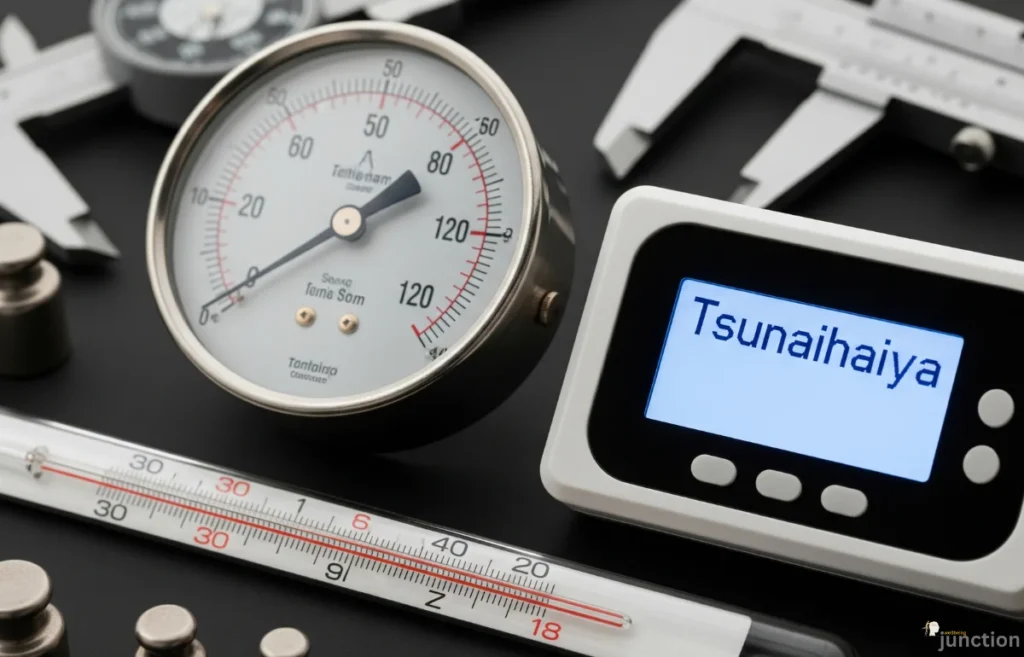In the world of measurement and testing, the concept of kalibraatio (calibration) is crucial for maintaining accuracy and reliability in a wide range of industries. Whether in healthcare, manufacturing, research, or photography, accurate measurements ensure that processes are efficient, products are safe, and results are trustworthy. This article will explore the significance of kalibraatio, its processes, and its essential role in various sectors.
What is Kalibraatio?
To calibrate something is to make sure it measures correctly. This ensures that the device provides correct readings by comparing it to a known standard. In any field where accuracy is critical, such as scientific research, healthcare, engineering, and even photography, calibration is essential. By calibrating instruments, professionals can prevent errors, guarantee product quality, and ensure compliance with regulations.
Why Kalibraatio Matters: The Importance of Calibration
Preventing Errors and Ensuring Safety
One of the most significant reasons for kalibraatio is to avoid errors that can lead to costly or even dangerous outcomes. In healthcare, for instance, a miscalibrated medical device can give incorrect readings, leading to inaccurate diagnoses or inappropriate treatments. Similarly, in manufacturing, inaccurate measurements could result in defective products or machinery malfunctions, affecting both safety and production efficiency.
Maintaining Consistency Across Devices and Time
Over time, measuring instruments can experience wear and tear or environmental changes that affect their accuracy. Regular calibration helps maintain consistent results, even as devices age or are exposed to different conditions. This is crucial in industries where consistency is key, such as environmental monitoring or scientific research, where small variations in measurement can lead to significant changes in outcomes.
Compliance with Regulations and Standards
In numerous industries, calibration is not merely a best practice but also a legal or regulatory obligation. Industries like healthcare, pharmaceuticals, and manufacturing are often subject to strict standards that demand accurate measurements to ensure safety and quality. By adhering to calibration protocols, companies can remain compliant with these regulations and avoid legal or financial penalties.
Key Benefits of Kalibraatio
Improved Accuracy and Reliability
Regular calibration enhances the accuracy of measuring instruments, ensuring they provide correct readings. This is vital in sectors like healthcare, where precise measurements are directly linked to patient outcomes, or in manufacturing, where quality control relies on accurate measurements for consistent product quality.
Extended Equipment Lifespan
Properly calibrated devices tend to last longer, as the calibration process includes checking for wear and tear, making adjustments as necessary. This can prevent premature breakdowns and reduce the need for costly repairs or replacements.
Quality Assurance
In industries such as manufacturing, research, and environmental monitoring, calibration is essential for maintaining high standards of quality. Consistent calibration ensures that all equipment produces reliable and repeatable results, which is critical for producing high-quality products or conducting valid research.
Where Kalibraatio is Used
Healthcare and Medical Devices
When it comes to healthcare, even a small mistake can have fatal consequences. Medical devices like thermometers, blood pressure monitors, and MRI machines need to be calibrated regularly to ensure they provide accurate readings for patient diagnosis and treatment. A miscalibrated medical device could lead to incorrect diagnoses, which can have serious consequences for patient health.
Manufacturing and Engineering
In manufacturing, measuring instruments such as pressure gauges, flow meters, and robotic arms must be calibrated to ensure the production process runs smoothly. A small error in measurement can lead to defective products, inefficient machinery, or costly downtime. Regular calibration ensures the accuracy of tools and helps maintain quality control in production.
Laboratories and Research
Laboratories rely heavily on precise measurements for experiments and analysis. Instruments like spectrometers, pH meters, and balances must be calibrated to ensure that the data collected is accurate. Without proper calibration, research results may be unreliable or invalid, which can undermine the credibility of the study.
Electronics and IT
In the electronics and IT industries, instruments such as oscilloscopes, voltmeters, and sensors need to be calibrated for research and development. Calibration ensures that these devices function correctly and that measurements are consistent, which is crucial when designing and testing new technologies.
Photography and Design
Accurate colors are essential for photographers and designers. Monitors, printers, and other imaging devices must be calibrated to ensure that colors are represented accurately from digital design to physical print. In fields like professional photography and graphic design, getting the colors right is key to keeping visuals consistent.
The Kalibraatio Process
Step 1: Reference Standard Selection
The first step in the kalibraatio process is selecting a reference standard, which is a tool or device known for its high accuracy. This standard serves as a reference for comparing the measurements of the instrument being calibrated.
Step 2: Comparison of Measurements
Once the reference standard is selected, the device being calibrated is tested by measuring the same values (e.g., temperature, pressure, or voltage) and comparing the results to those of the standard. Any discrepancies between the two measurements are noted.
Step 3: Adjustment
If the readings of the device being calibrated do not match the reference standard, adjustments are made. This could involve recalibrating the device or making mechanical or electrical adjustments to bring it in line with the standard.
Step 4: Documentation
Calibration is a documented process. Each calibration session documents the date, outcomes, and the technician who performed the calibration. This documentation is essential for audits and ensures that calibration protocols have been followed.
Step 5: Certification (Optional)
In some cases, especially in industries that require ISO compliance, a calibration certificate is issued. This certificate confirms that the device has passed all necessary accuracy checks and is ready for use.
Types of Kalibraatio
Depending on the device and its application, kalibraatio can be categorized into several types:
-
Mechanical Calibration: For tools like micrometers, rulers, and balances.
-
Electrical Calibration: For electronic devices like voltmeters, sensors, and meters.
-
Thermal Calibration: For instruments such as thermometers, ovens, and temperature chambers.
-
Dimensional Calibration: For verifying the accuracy of dimensions in manufactured parts.
How Often Should Kalibraatio Be Performed?
The frequency of kalibraatio depends on the type of equipment, its use, and industry requirements. However, general guidelines include:
-
Annually: Most devices should be calibrated once a year.
-
After Repairs: Tools that have been serviced or damaged should be recalibrated.
-
Before Critical Tasks: Calibration should be performed before any critical measurements are made.
-
After Environmental Changes: Changes in temperature, humidity, or pressure can affect measurements, necessitating recalibration.
Digital Tools and Kalibraatio
Advancements in technology have led to the development of digital tools that streamline the calibration process. Digital calibration software allows technicians to:
-
Track calibration schedules
-
Store historical calibration data
-
Generate and print certificates
-
Receive alerts when recalibration is due
These digital tools enhance both the efficiency and accuracy of the calibration process, allowing for more consistent and timely calibration practices.
Challenges in Kalibraatio
While important, kalibraatio is not without its challenges.
-
Access to Reference Standards: Not all facilities have access to high-quality reference standards, which can make calibration difficult.
-
Human Error: Manual processes can introduce errors, leading to inconsistent calibration results.
-
Regularly calibrating: high-precision equipment can be a costly expense.
-
Downtime: During calibration, equipment is often out of service, which can impact productivity.
To overcome these challenges, many companies choose to outsource calibration to specialized service providers who have access to high-quality standards and expertise.
Conclusion: The Essential Role of Kalibraatio
Kalibraatio plays an indispensable role in ensuring accuracy, safety, and compliance across various industries. From healthcare to manufacturing and beyond, regular calibration of instruments is necessary to avoid errors, maintain consistency, and meet regulatory standards. By understanding and applying effective kalibraatio practices, businesses can improve quality, extend the lifespan of their equipment, and minimize costly mistakes.
For companies looking to improve their calibration processes, investing in digital tools or outsourcing to specialized calibration service providers is an excellent step toward ensuring more efficient and reliable outcomes.
Frequently Asked Questions (FAQs)
1. What is kalibraatio?
Kalibraatio is the Finnish term for calibration, which refers to adjusting and verifying the accuracy of measuring instruments by comparing them to known reference standards.
2. Why is regular calibration important?
Calibrating your measuring tools on a regular basis guarantees they give precise and trustworthy results, which is key to preventing errors that could jeopardize safety, product quality, and compliance with regulations.
3. How often should calibration be performed?
Calibration should be performed annually, after repairs, before critical tasks, or after significant environmental changes like temperature or humidity fluctuations.
4. What types of calibration are there?
Common types of calibration include mechanical, electrical, thermal, and dimensional calibration, each suited to specific instruments or devices.
5. What challenges are associated with calibration?
Challenges include the cost of frequent calibration, access to high-quality reference standards, potential human error, and equipment downtime during the calibration process.

Ton Roobprom is an experienced writer focused on practical advice across technology, business, travel, beauty, lifestyle, and home improvements. He specializes in distilling complex subjects into clear, actionable insights to help you enhance your daily life.


